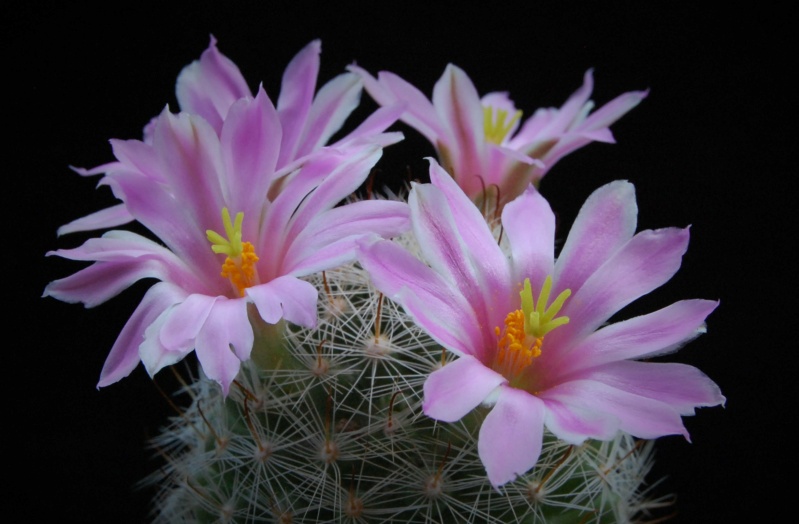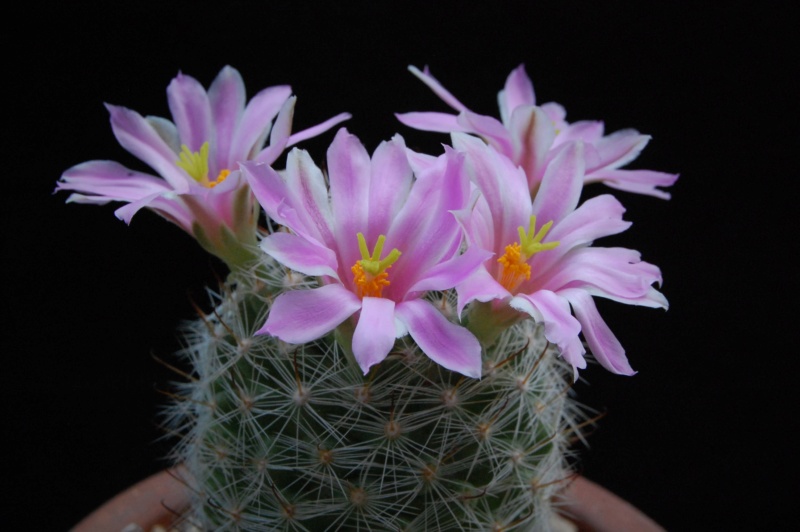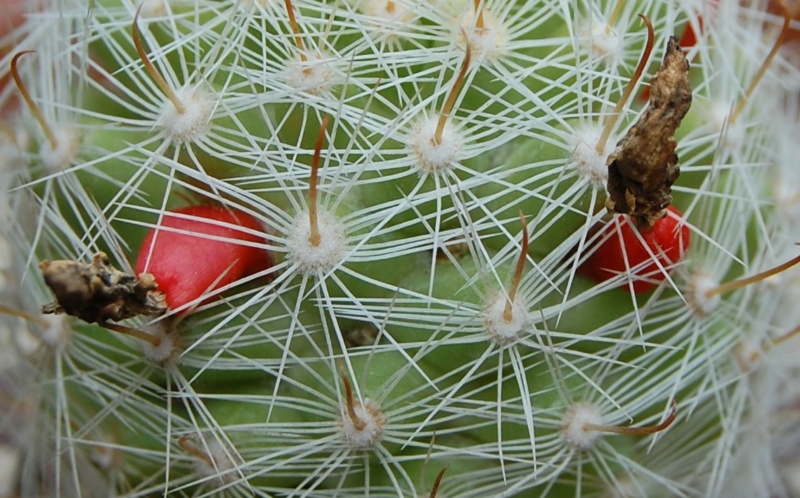DESCRIPTIONS OF SPECIES NOVAE SINCE "THE MAMMILLARIA HANDBOOK"
No. 20. Mammillaria boolii sp. nov. G. Lindsay Cact. & Succ. J, Amer., XXV (2): 48. 1953
Body: When collected, flat-topped and depressed level with the ground, but under cultivation and when turgid, spherical, 3.5 cm. high
and 3 cm. in diameter, simple or occasionally caespitose, the branches arising from the axils of old tubercles, glaucous-green.
Tubercles in 5 - 8 series, terete, the lower ones dorsally flattened, truncate, the axils slightly lanate in youth, naked in age. Areoles large, round, bearing dense White tomentum above the radial spines when young, naked in age.
Spines: Radials about 20, acicular, white, spreading, appressed, equal, 15 mm. long; central one, subulate, porrect, strongly hooked,
15. - 20 mm. long, yellow or horn-coloured with darker tip.
Flowers: 25 mm. long, 24 mm. broad when fully expanded, pink or lavender-pink, from axils of old tubercles; buds pointed, the tube 13 mm.
long, the limb 12 mm. Outer perianth segments oblanceolate, entire, acute or apiculate, pink with an olive midstripe on the lower surface. Inner perianth segments similar to outer ones, pink or pink-lavender with lighter margins. Filaments white, included. Style white. Stigma lobes 4, linear pale-green.
Fruit: Long-clavate, orange, smooth, to 30 mm. long and 5 mm. wide, perianth persistent.
Seeds: Black, dull, pitted, with constriction above the broad diamond shaped hilum.
Notes: Type specimen: Lindsay 2220, collected at San Pedro Bay, Sonora, Mexico, 1952. Species known only from type locality, named
after discoverer, Mr. Herbert W, Bool, of Phoenix Arizona.
From "The Journal of the Mammillaria Society" vol.II n.2 - April 1962
Mammillaria boolii ML 733
ML 733 - Bahía San Carlos, Sonora, Mexico






